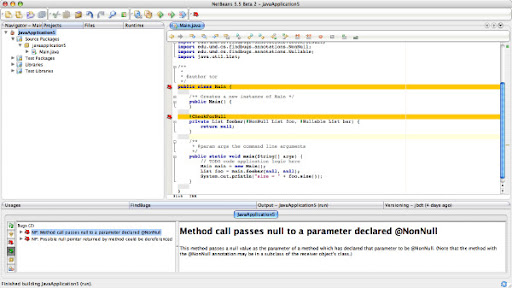WARNING: This blog entry was imported from my old blog on blogs.sun.com (which used different blogging software), so formatting and links may not be correct.
Hotfix 2 has been released for Creator. The focus of this patch release has been performance, and there are some significant gains.
Here's
one testimonial from the Creator forum after the bits were released this morning:
This is awesome. I have experienced orders of magnitude improvement in performance - specially building and deploying the apps. It used to take 3 mins., now it takes less than 10 secs.
The main performance fixes were in the source modeller, so project open and editing is where the speedups are to be found.
Sakhti Gopal in Creator QA has done a lot of analysis of the performance improvements and provides further details on the improvements. Opening pages, switching from source to design view etc. is at least twice as fast, and in many cases several times faster.
The Tutorial Divas on the Creator team also provide coverage; they've measured various tasks on a moderate project, and as you can see the performance improvements are dramatic. They are using percentages rather than speedup factors. What is a 97% improvement? Some people think of "100%" improvement as doubling something (or when appropriate, halving something). But here it means that it was reduced by 97% of the original amount; thus it is the same as a 32x speedup!! Adding a table to the first page for example used to take 16 seconds, it now takes 4 seconds - a 4x speedup.

If you've been using Creator 2 and have been dissatisfied with the performance (you were not alone), hopefully this will make you much happier. If the earlier performance turned you off from Creator 2, give it another chance. This is not the end of the performance work for Creator; a larger rearchitecting of the Java source model in our tools is being performed as a foundataion for NetBeans 6.0 (to also accomodate a lot of new cool Java source editing features). In the next Creator generation, this will allow Creator to be a lot more efficient both in CPU and memory usage. Today, Creator does not use NetBeans' source model; it has its own, which means there are two source models that need to be kept in sync. What Hotfix 2 did was ensure that this syncs are only done when necessary. And what a difference it makes!
How do you get it? Use the Update Center in Creator. If you don't have direct internet access from your Creator installation, you should be able to download the update by following links from the Creator site.


